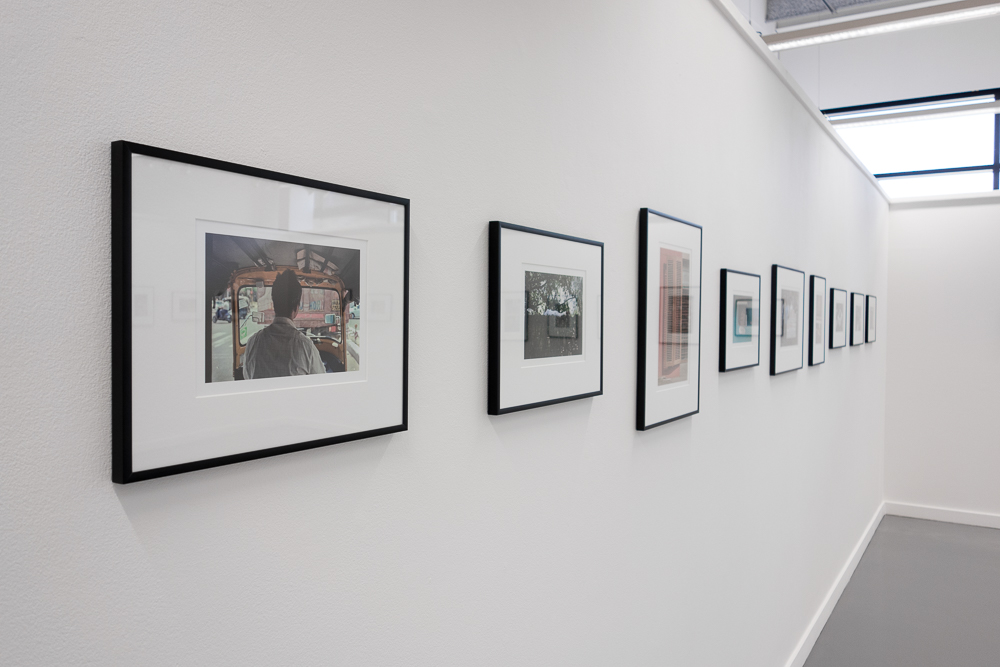Sector 17 an exhibition of photographs by Richard Pickup at the Wedge Gallery, Lichfield
Sector 17
Exhibition at the Wedge Gallery, Lichfield
Sector 17 is a vibrant urban district of the city of Chandigarh in Northern India. Its streets teem with life. The pavements are full of street vendors selling everything from food to improvised souvenirs. Shops and offices are in abundance, flanked by legal offices, warehouses and invitingly ornate restaurants. The rich and poor walk shoulder to shoulder, a marked and at times shocking contrast that is only underlined by the presence of luxury western retailers. Framing it all is concrete, dust and heat. European Modernism provides the blueprint for the architecture and it is implemented on a truly massive scale. The roads are, frankly, chaotic. Cyclists go head to head with lorries and even pedestrians in a constant battle for room. Lorries bear the hand-painted logo ‘horn please’ and everyone obliges – about once every other second. Everywhere people smile, a very particular beaming, Indian smile. To me it came to mean a contentment with life amidst the hustle and bustle, the daily routine of work and making a living. Indian people have an overt connectedness with life that I haven’t experienced elsewhere. Perhaps a product of their spirituality, another abundant characteristic.
I had the opportunity to photograph Sector 17 in May of this year. My trip lasted for three intense days give or take, at least in terms of time behind the camera. I have been interested in street photography since the late nineteen nineties, at which time I near obsessively photographed Birmingham, Paris and London, after completing my Masters Degree in the Social History of Art. The body of work you see before you was only loosely conceived as such, and not as an exhibition. I had decided to follow my instincts given the opportunity, and it was only later on surveying the work and receiving encouragement from my colleagues at work that I decided to mount a show (I am a lecturer in Photography). I think that some distinct themes have emerged, together with that more intangible aspect of the photographer’s particular aesthetic vision and tendencies. I was interested in people at work, aspects of the architecture, the beating heart of the area that is transportation, and small, insistent details that speak of the ingenuity and life of the people of the area. It would be disingenuous of me not to also say that I was a tourist and that too inevitably colours the work.
The work was made using a 35mm film rangefinder camera and a digital compact. Both are small, light and unobtrusive – ideal for work on the street. For the film rangefinder I worked with two prime lenses, choosing one before spending time shooting with it. This I believe helps me to envisage my framing before raising the camera to my eye, an asset on the street where everything happens so quickly. I have made a conscious decision to keep my prints small, in keeping with the small formats used and in order to preserve detail and that ‘photographic’ quality I enjoy. I find myself interested not only in photography’s ability to record what the photographer wants it to, but in all the details, surprises and chance juxtapositions that a photograph can serve up. I think the most successful pieces have that certain excess of detail, being ‘unresolved’ and lending themselves to repeated viewings. Processing - preparing the images for print using software - is correspondingly gentle and hopefully unobtrusive.
Richard Pickup, September 2013
Installation view of the Sector 17 show
Some work from the show
Scaffolding Workers
Girl on Bike
Sleeping Man
Bike Seat
Taxi Driver






